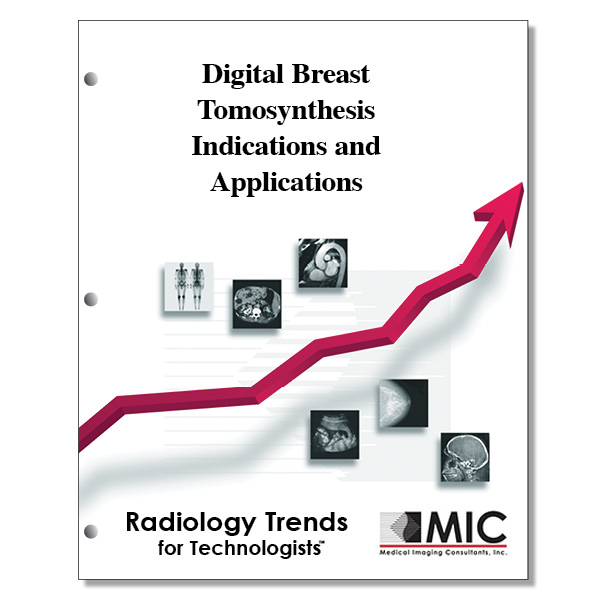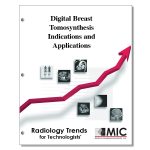

Digital Breast Tomosynthesis Indications and Applications
A review of the potential uses, benefits, and limitations of digital breast tomosynthesis in the diagnostic setting.
Course ID: Q00500 Category: Radiology Trends for Technologists Modality: Mammography2.0 |
Satisfaction Guarantee |
$24.00
- Targeted CE
- Outline
- Objectives
Targeted CE per ARRT’s Discipline, Category, and Subcategory classification for enrollments starting after February 17, 2023:
[Note: Discipline-specific Targeted CE credits may be less than the total Category A credits approved for this course.]
Breast Sonography: 0.50
Patient Care: 0.50
Patient Interactions and Management: 0.50
Mammography: 2.00
Image Production: 0.50
Image Acquisition and Quality Assurance: 0.50
Procedures: 1.50
Anatomy, Physiology, and Pathology: 0.75
Mammographic Positioning, Special Needs, and Imaging Procedures: 0.75
Registered Radiologist Assistant: 0.50
Procedures: 0.50
Thoracic Section: 0.50
Radiation Therapy: 0.50
Patient Care: 0.50
Patient and Medical Record Management: 0.50
Outline
- Introduction
- DBT Technology
- Indications for DBT
- Lesion Visibility
- Reader Performance and Preferences
- Replacement for Traditional Supplemental Imaging
- Contraindications for DBT
- Practical Use of DBT in Diagnostic Workup
- Assessment of Noncalcified Cancers
- Architectural Distortion
- Focal Asymetry
- Masses
- Localization of Single-View Findings
- Breast Cancer Staging
- Tumor Size
- Number of Tumor Lesions or Satellite Lesions
- Evaluation of the Contralateral Breast
- Assessment of Noncalcified Cancers
- Potential Limitations and Drawbacks
- Conclusion
Objectives
Upon completion of this course, students will:
- list the reasons for performing diagnostic mammography
- relate alternate terminology for pseudolesions
- describe the x-ray tube movement during digital breast tomosynthesis
- state what DBTCANNOT be used for
- recall the thickness of reconstructed DBT post-acquisition images
- define combination acquisition mode
- list the advantages of combination acquisition mode imaging
- compare outcomes for the Dang et al. study
- state recommended number of views for diagnostic DBT
- describe how infiltrating invasive lobular carcinoma presents at mammogram
- compare DBT vs. conventional diagnostic mammography in reader studies
- discuss study findings relative to the potential of DBT to replace other imaging modalities
- determine which study examined diagnostic workflow
- list the outcomes of the Philpotts et al. study
- state workflow improvements as readers become more familiar with DBT technology
- describe the relative bell curve for DBT accuracy
- state the effect of DBT in regard to number of lesions classified at BI-RADS category 3
- explain the compression time needed for combination-mode DBT
- compare the imaging features of breast cancer for DBT versus conventional mammography
- relate the importance of identifying architectural distortion at diagnostic mammography
- describe architectural distortion as it presents at mammography
- list factors associated with the appearance of architectural distortion
- state the types of scars that manifest as architectural distortion
- describe focal asymmetry
- define asymmetry
- list how DBT can be utilized for the evaluation of focal asymmetry
- list how breast masses are characterized
- compare mass margins, shape, and density between DBT and FFDM
- name the tissue that comprises the majority of the breast
- state how breast masses should be evaluated
- describe the angle used for MLO views of the breast
- describe how image sets are arranged for DBT
- state how known or suspected lesions are examined at mammogram
- note the prevalence of contralateral breast disease for women with newly diagnosed breast cancer
- state the desired compression breast thickness for DBT
